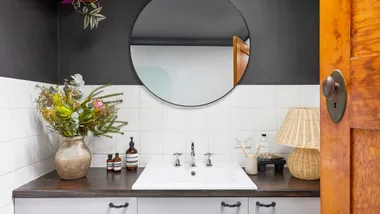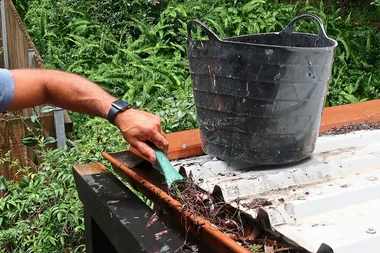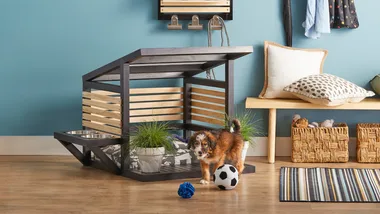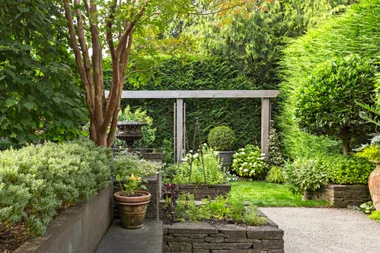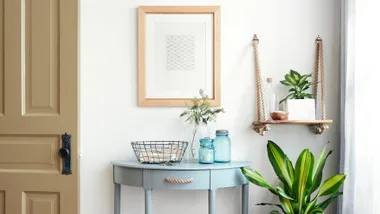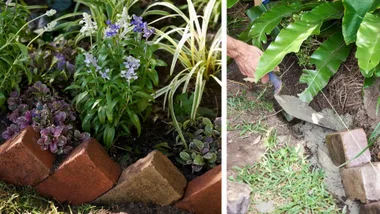An arrangement of fresh cut flowers can transform a room, amplify a welcome or put a seal on an event you want to remember forever. Here’s how to create floral art!
WATCH: How To Propagate Hydrangeas
For maximum impact, choose your flowers to contrast with your interior decor. In minimalist spaces with little colour, go for bold, vibrant blooms, while a busy room calls for soft and calming pastels.

Gather your supplies
- Hydrangea paniculata
- Echinacea ‘Double Scoop Lemon Cream’
- ‘Molineux’ rose
- Sedum ‘Autumn Joy’
- Miscanthus sinensis ‘Kleine Fontaine’
- Hornbeam branches (Carpinus betulus)
- Sharp floral snips
- String or ribbon
Here’s how
Step 1
Cut flower and foliage stems as long as possible with clean snips. Then remove about 90% of the foliage, especially on lower parts of the stems.
Step 2
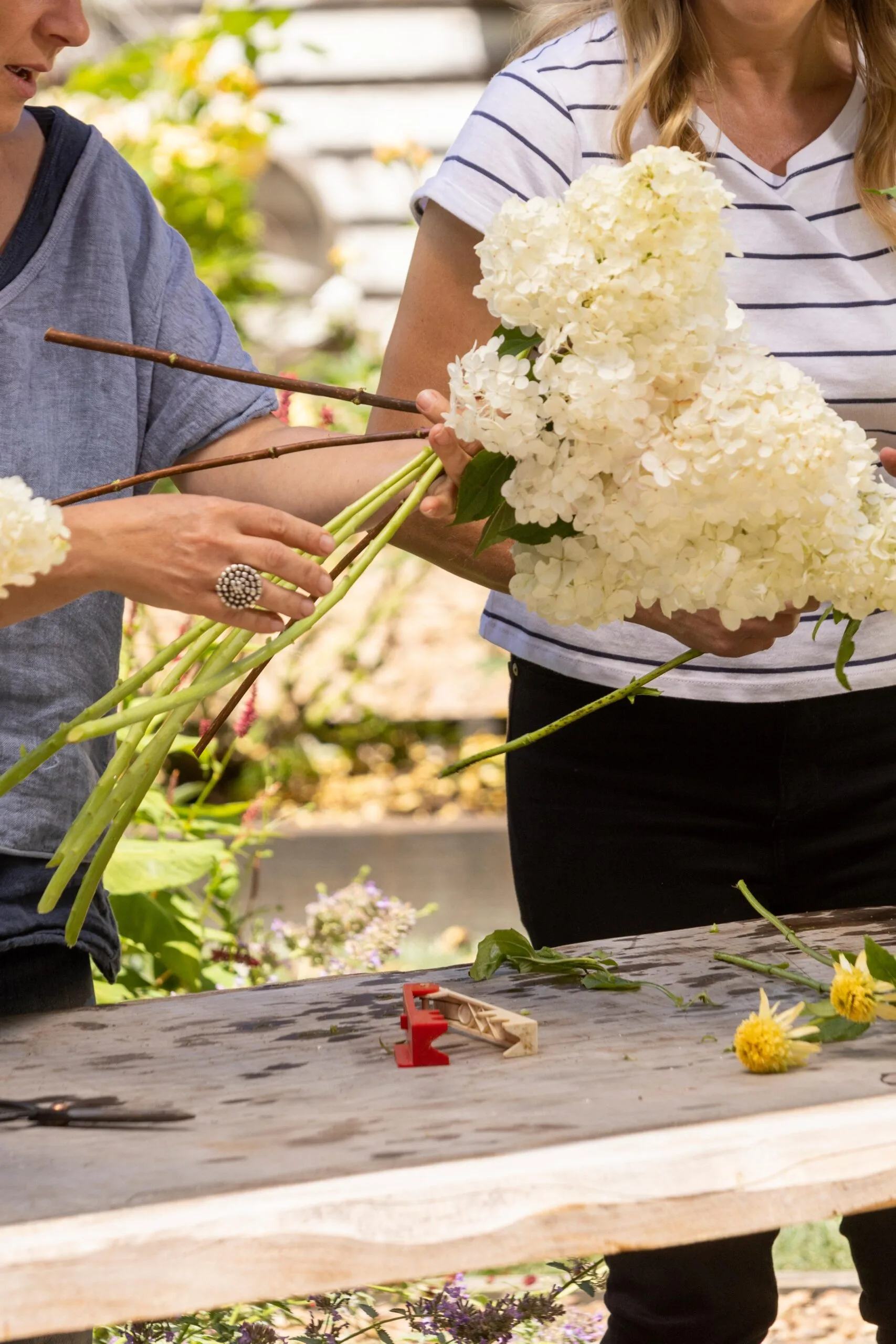
Use a large flower as a base – or scaffolding – from which to build your bunch, here conical hydrangeas. Push stems through your hand in a criss-cross pattern and hold loosely, leaving openings for the next layers.
Step 3
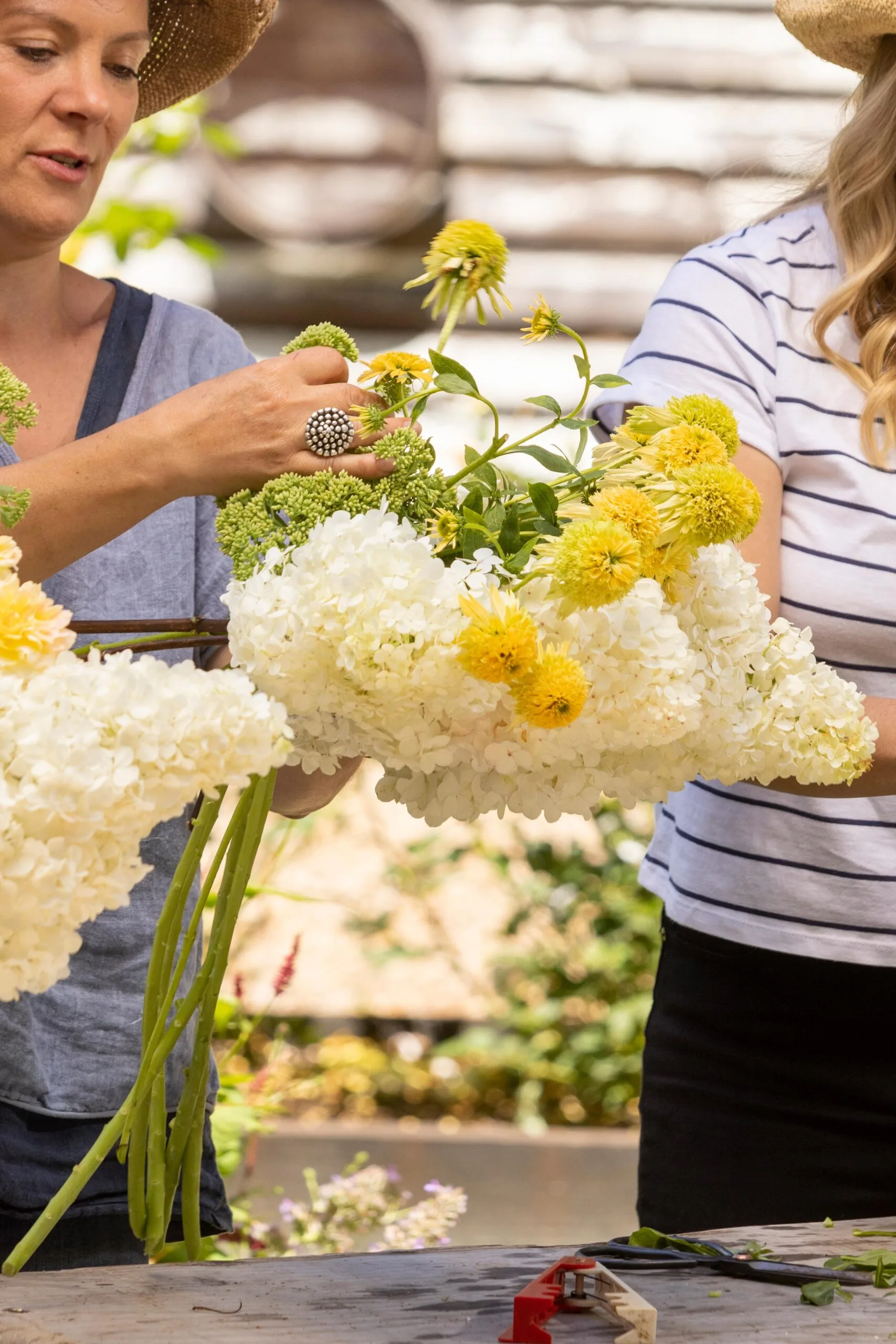
Push through smaller flowers for a layered effect, turning arrangement slightly as you go and crossing stems. Here, it’s echinacea, roses and sedum (when buds are still softly lime before flowers open to reveal dusky red petals).
Step 4
Make sure all flowers in the arrangement can be seen – whether it’s a table centrepiece, a vase arrangement or a bouquet – by pulling down or pushing up stems through your hand.
Step 5
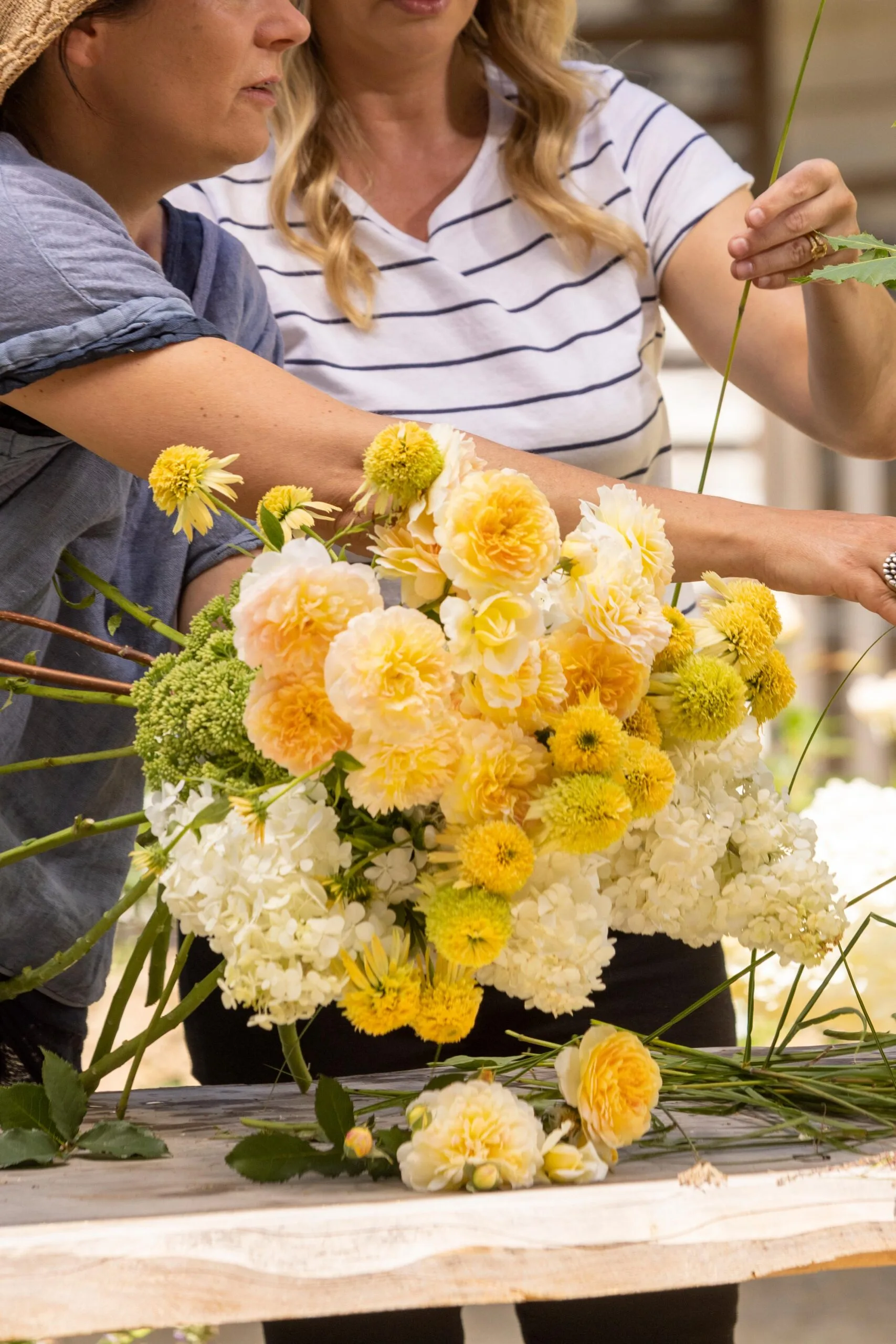
As the arrangement gets bunchy, add an airy touch with a few ornamental grass sprigs in one area.
Step 6
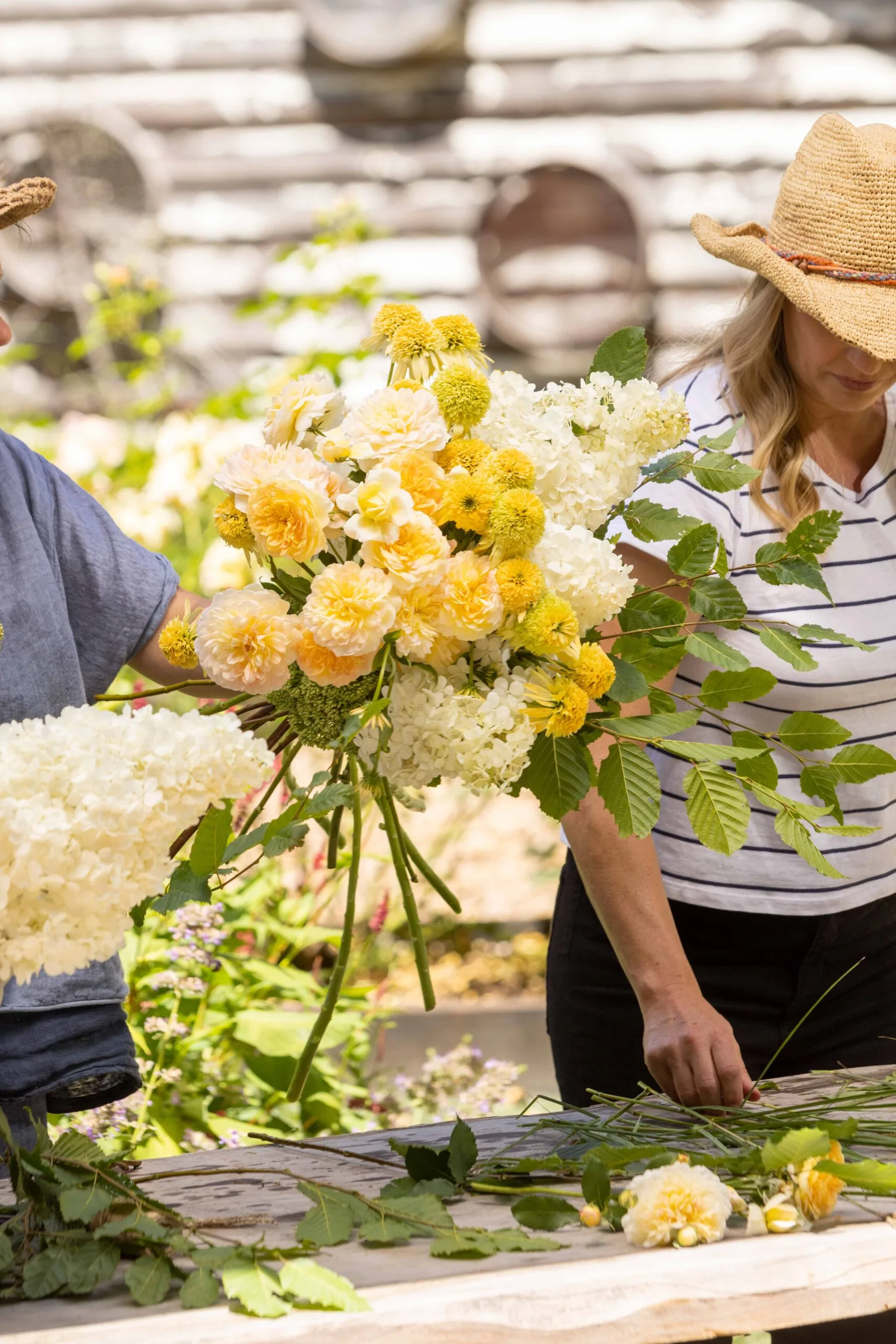
Add sprays of foliage around the outside, or in just one area.
Step 7

Tie up bunch just under the flower heads with string or ribbon.
Step 8
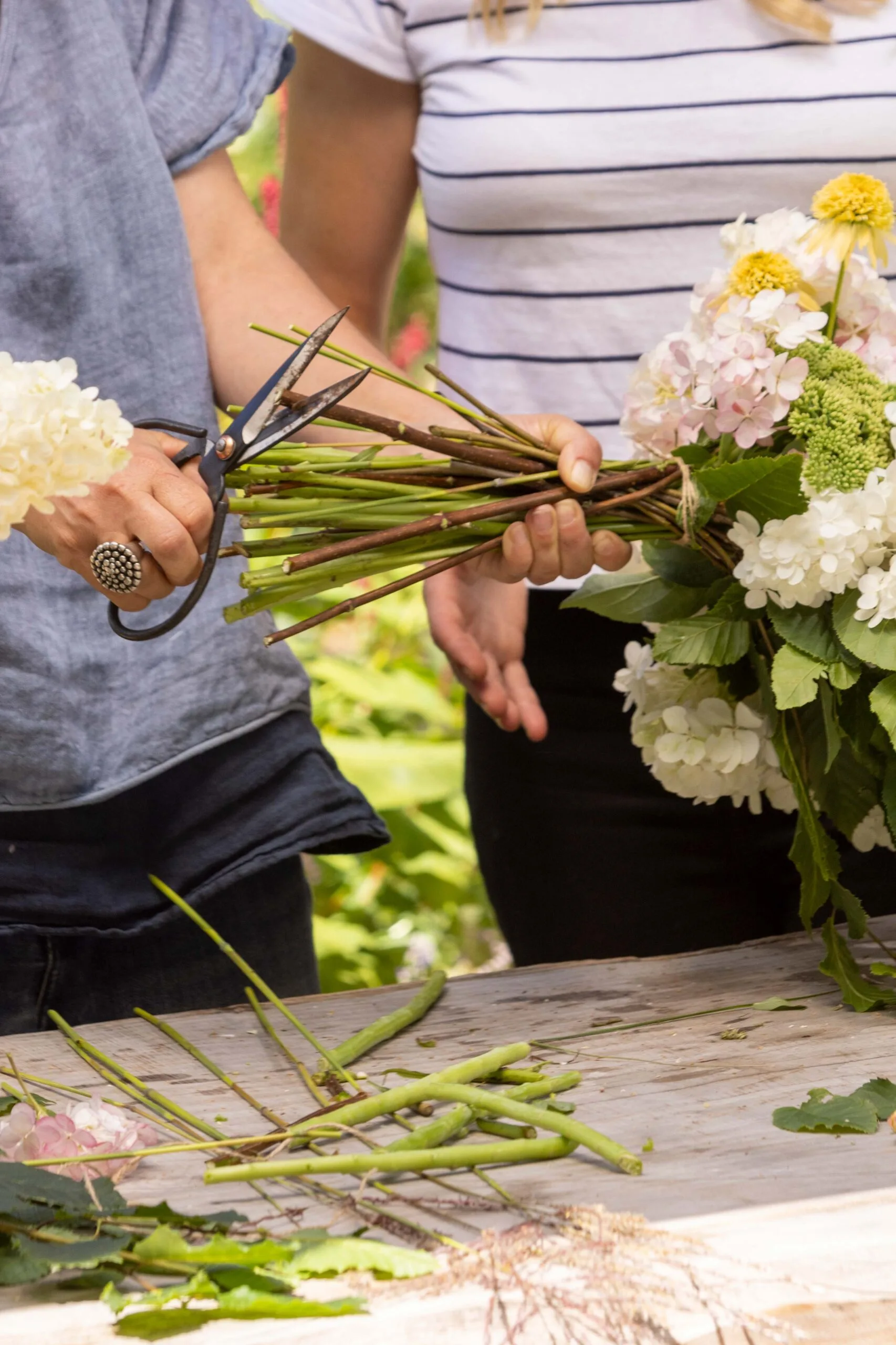
Trim stems to the same length with snips.
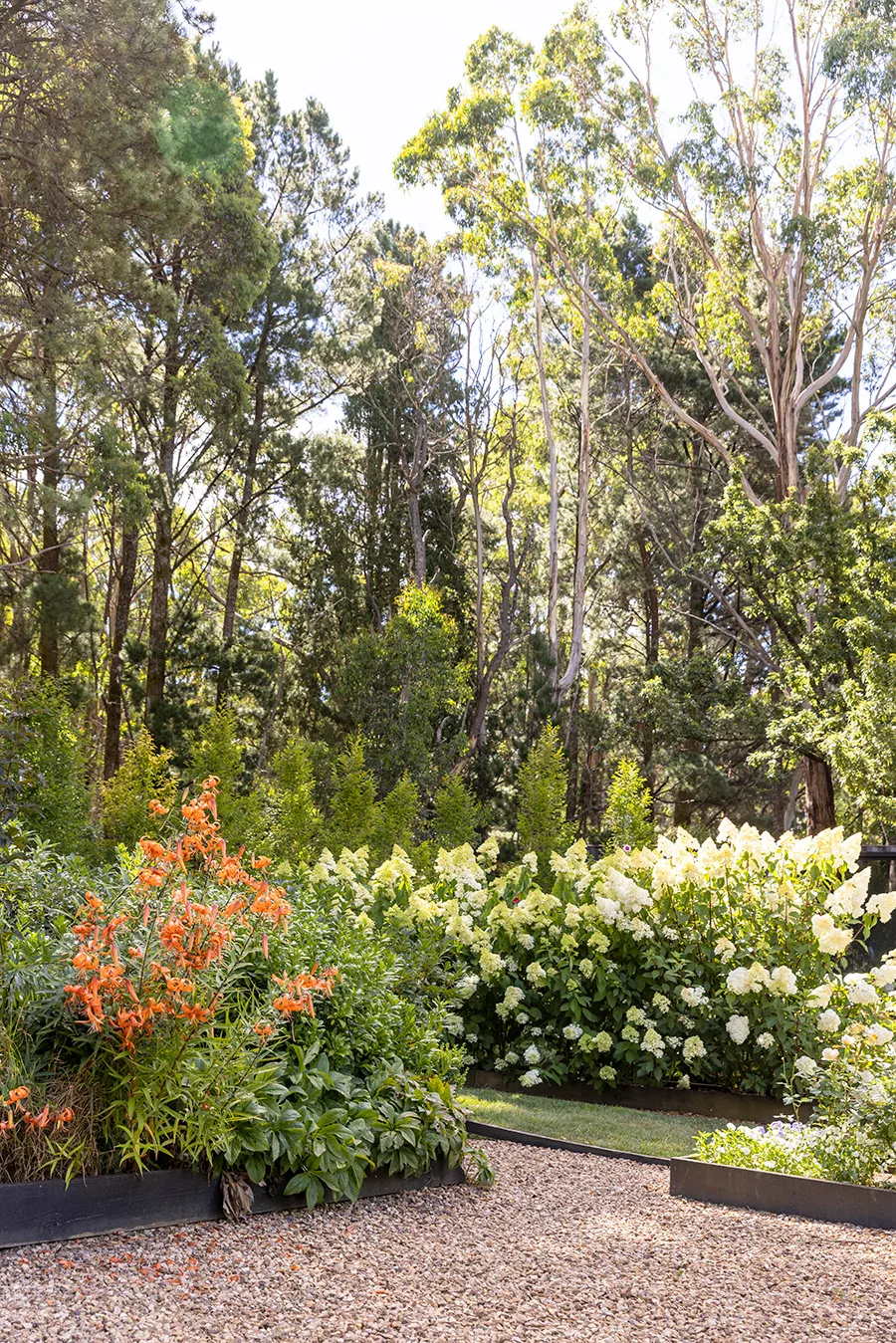
How could you ever walk this garden path without snips in your pocket? The flowers eager for a change of scenery are (from left) tiger lilies (Lilium lancifolium), daphne (D. adora ‘Alba’), conical hydrangeas (H. paniculata) and roses (Rosa ‘Jude the Obscure’). While you strip flower stems of most of their foliage when creating an arrangement, they still need greenery for a more natural look – use hellebore leaves (bottom left) and hornbeam, here standing as an informal hedge behind the tiger lilies.



You might also like:
7 clever hacks to keep your flowers from dying
How to make multi-level corten steel garden beds
The health benefits of fresh-cut flowers you need to know about

